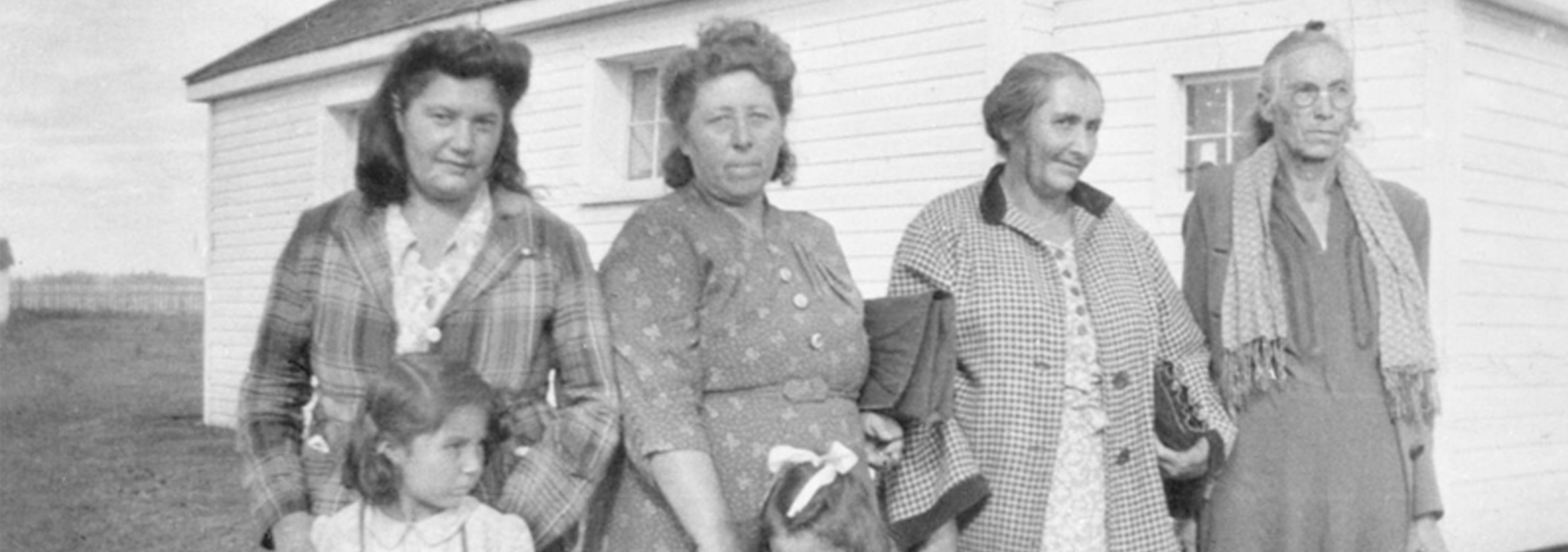Road allowance communities were home to Métis families throughout the late 1800s until the mid- to late 1900s. Métis peoples used the road allowances as new home communities after experiencing relocations, migrations and dispossession from their homelands. After resistance and violence in a period during and after the Riel Resistance of 1869–1870 and the North–West Resistance in 1885, Métis were marginalized and labelled as rebellious or troublesome by the government of Canada and the provinces.

Road Allowance Communities
The term road allowance originates from the designated space that is measured between a paved or unpaved road and the boundary of where a section of private, municipal, provincial, railway or Crown land is marked. Forced into the geographic and economic margins of Canadian society, Métis built the road allowance communities upon unused portions of land that were typically on the border of a larger non-Indigenous community, a First Nations Reserve or in less populated rural areas. Road allowance communities were also often built adjacent to roads, along farm land, lakes, rivers, creeks, railway lines, hydroelectric facilities, near small towns and inside large, urban areas (see Rooster Town). In the late 1800s and first half of the 1900s it was common for Métis to face dispossession. As a result, they made the best of what was left, which was a common practice for Métis with respect to resources or land.
Day-to-Day Life on Road Allowances
Memories of life on the road allowances have been recorded by Métis Elders and in Métis oral histories. Experiences of living on the road allowances vary. Many remember years of hardships, poverty and facing severe racism and discrimination. Others remember their time fondly, living with large, extended families, doing well with what they had, and enjoying sports, horse racing, dance and music in the community. It was customary for Métis to welcome visitors to their communities, and no matter how little they had, a guest never went home hungry. Métis social, economic and political lives still carried on even though those actions might have been invisible to the “rest of Canada.”
Communities on the Margins
Road allowance communities were not taxable or connected to municipalities. As a result, they were not connected to services and support such as home postal delivery, running water, electricity and snow removal. In many cases, they had no access to public schools. Métis communities had to operate without infrastructure or support, and many educated their children on their own or at church-run schools. Communities were limited in resources; however, Métis families share memories of feeling safe and provided for even in the face of discrimination or forced migrations.
Often affiliated with poverty or an image of “squatters,” road allowance communities were self-sustained and were supported by Métis who were employed as labourers, seamstresses, cooks, cleaners, commercial fishermen/fisherwomen or farmhands.
The Free People: the Métis
The road allowances were spaces for Métis to carry on their community lives as the “Free People” or Otipemisiwak, the people who own themselves. In many communities multiple languages were spoken, including the Métis language, Michif. In addition, traditional and cultural practices carried on inside road allowance communities. During years of severe marginalization and oppression, road allowances also provided space to keep the languages and cultures alive. These communities were also locations of strong kinship ties that held together families after they moved or were forced off their land and out of their homes. Métis road allowance communities have also become cultural touchpoints. Famously described by Métis writers and artists, including Maria Campbell and Sherry Farrell Racette in Stories of the Road Allowance People, life on the road allowance appears in many songs (see Music of the Métis), poetry, visual art, films and in Michif language(s).
The Breakup of Road Allowance Communities
The Road Allowance period ended between the 1930s and 1960s in most locations in Western Canada. Force was used to push the Métis off the land in many communities. Homes were burned down and families were removed to make space for “co-op” pastures. It should be noted that lack of housing remains an issue for many Métis, and as a result some Métis may still live on unused or unorganized portions of land.

 Share on Facebook
Share on Facebook Share on X
Share on X Share by Email
Share by Email Share on Google Classroom
Share on Google Classroom







